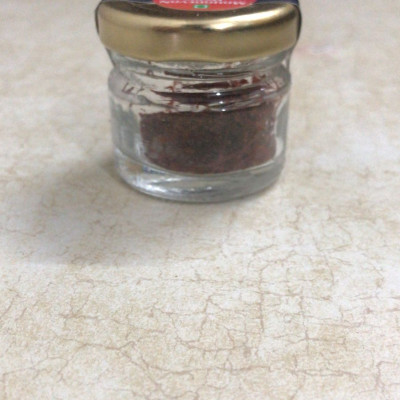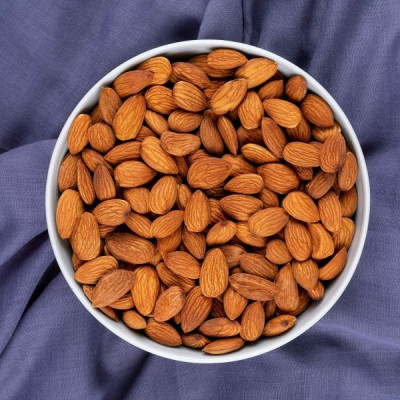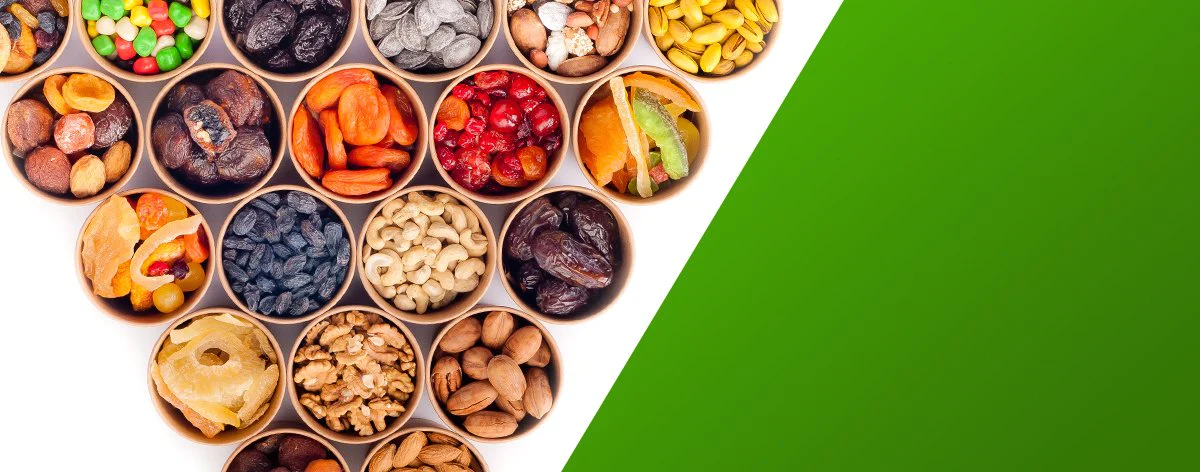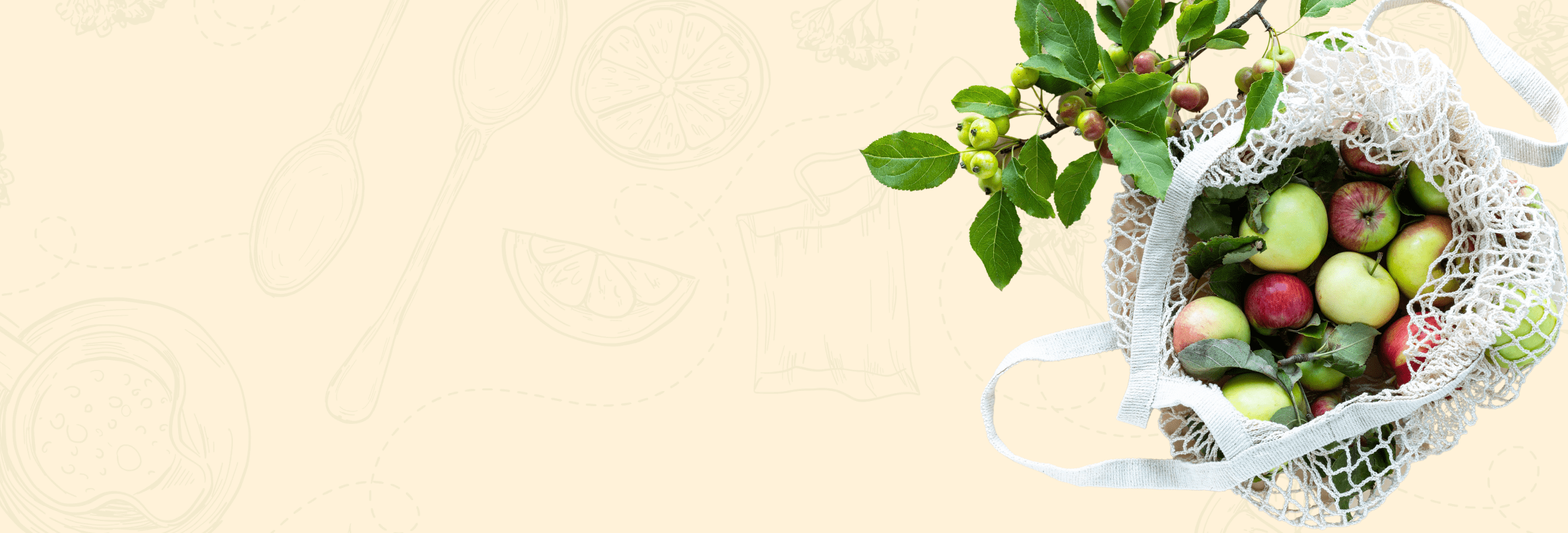DRY FRUITS
Pistachio Paradise: Dive into the Irresistible Delight of Dry Fruit Pista!

ABOUT PISTACHIO (PISTA) Dry Fruit
Introduction to PISTACHIO (PISTA) Dry Fruit
Pistachio, also known as "Pista," is a delicious and nutritious dry fruit that is widely consumed and loved around the world. It is derived from the Pistacia vera tree, which is native to regions in Central Asia and the Middle East. Pistachios have a unique flavor, vibrant green color, and a distinctive shell that encases the edible kernel inside. They are not only a popular snack but also a versatile ingredient used in various culinary creations. Let's explore the wonderful world of pistachios and discover the many reasons why they are treasured by food enthusiasts and health-conscious individuals alike.
Here are some of the key health benefits of consuming pistachios:
- Heart Health: Pistachios are known to promote heart health. They contain monounsaturated fatty acids, which help reduce bad cholesterol levels and increase good cholesterol levels, thereby reducing the risk of cardiovascular diseases.
- Nutrient-Rich: Pistachios are packed with essential nutrients. They are a good source of protein, fiber, healthy fats, vitamins (such as vitamin B6, and vitamin E), minerals (such as potassium, magnesium, and copper), and antioxidants.
- Weight Management: Despite being calorie-dense, pistachios can actually aid in weight management. Their combination of protein, fiber, and healthy fats helps keep you feeling full and satisfied, reducing the likelihood of overeating.
- Blood Sugar Control: Pistachios have a low glycemic index, which means they cause a slower and steadier rise in blood sugar levels. This makes them a suitable choice for individuals with diabetes or those aiming to manage their blood sugar levels.
- Eye Health: Pistachios are rich in antioxidants, including lutein and zeaxanthin, which are beneficial for eye health. These antioxidants help protect the eyes from oxidative damage and age-related macular degeneration.
- Digestive Health: The fiber content in pistachios promotes healthy digestion and helps prevent constipation. Additionally, the act of cracking open the shells can slow down eating, allowing for better digestion and portion control.
- Antioxidant Properties: Pistachios are rich in antioxidants, which help protect the body's cells from damage caused by free radicals. This can contribute to overall health and may reduce the risk of chronic diseases.
Here is the nutritional profile of pistachios (Pista), highlighting their key nutrients:
- Protein: Pistachios are a good source of protein, with approximately 6 grams of protein per 1-ounce (28-gram) serving. Protein is essential for muscle repair, growth, and overall body function.
- Healthy Fats: Pistachios are rich in healthy fats, including monounsaturated and polyunsaturated fats. These fats contribute to heart health and help maintain healthy cholesterol levels.
- Fiber: Pistachios are a good source of dietary fiber, providing about 3 grams of fiber per serving. Fiber aids in digestion, promotes satiety and helps regulate blood sugar levels.
- Vitamins: Pistachios contain various vitamins, including vitamin B6, vitamin E, and folate. Vitamin B6 is important for brain development and function, while vitamin E acts as an antioxidant and supports immune health. Folate is crucial for cell growth and metabolism.
- Minerals: Pistachios are rich in minerals like potassium, magnesium, and phosphorus. Potassium helps maintain proper heart and muscle function, while magnesium is important for bone health and energy metabolism. Phosphorus is essential for strong bones and teeth.
- Antioxidants: Pistachios are packed with antioxidants, including lutein, zeaxanthin, and gamma-tocopherol. These antioxidants help protect the body against oxidative stress and may reduce the risk of chronic diseases.
- Low Glycemic Index: Pistachios have a relatively low glycemic index, which means they have a minimal impact on blood sugar levels. This makes them a suitable choice for individuals with diabetes or those watching their blood sugar levels.
- Calories: While pistachios are nutrient-dense, they are also calorie-dense. A 1-ounce (28-gram) serving of pistachios contains about 160 calories. Portion control is important to enjoy their nutritional benefits without excessive calorie intake.
Here are some unique culinary ideas for using pistachios (Pista) dry fruit:
- Pistachio-crusted Chicken: Create a delicious and crunchy coating for chicken by grinding pistachios and using them as a coating. Bake or pan-fry the chicken for a flavorful and nutritious twist.
- Pistachio Pesto: Blend pistachios, fresh basil, garlic, Parmesan cheese, and olive oil to create a unique and vibrant pistachio pesto. Use it as a pasta sauce, spread it on sandwiches, or drizzle it over grilled vegetables.
- Pistachio Energy Balls: Combine ground pistachios, dates, cocoa powder, and a hint of honey to make energy balls. These bite-sized treats are packed with nutrients and make for a convenient and healthy snack.
- Pistachio Salad: Add a crunchy element to your salads by tossing in chopped pistachios. They pair well with fresh greens, fruits like strawberries or oranges, and a tangy vinaigrette dressing.
- Pistachio-Crusted Fish: Similar to the chicken, you can create a pistachio crust for fish fillets. The nutty flavor and crispy texture complement the tender fish, making it a delightful and elegant dish.
- Pistachio Yogurt Bowl: Sprinkle chopped pistachios over a bowl of Greek yogurt along with fresh fruits, honey, and a sprinkle of cinnamon. It adds a delightful crunch and nutty flavor to your morning or snack-time routine.
- Pistachio Granola: Make your own homemade granola by combining rolled oats, pistachios, dried fruits, and a touch of honey or maple syrup. Bake it until golden brown, and enjoy it as a nutritious breakfast or snack option.
- Pistachio Ice Cream: Add a twist to traditional ice cream by incorporating crushed pistachios into the base. The creamy texture and nutty flavor create a delightful frozen treat.
- Pistachio Dukkah: Toast pistachios, sesame seeds, cumin, coriander, and other aromatic spices together. Grind them into a coarse mixture and use it as a seasoning for roasted vegetables, grilled meats, or a dip with bread and olive oil.
- Pistachio Chocolate Bark: Melt the dark chocolate, spread it on a baking sheet, and sprinkle crushed pistachios on top. Allow it to harden, then break it into pieces for a delicious and indulgent treat.
Here are some tips on adjusting flavors and textures when cooking or baking with pistachios (Pista) dry fruit:
- Toasting: Toasting the pistachios before using them in a recipe can intensify their flavor and add a subtle crunch. Spread the nuts in a single layer on a baking sheet and toast them in a preheated oven at 350°F (175°C) for about 8-10 minutes, or until they become fragrant and lightly golden. Allow them to cool before incorporating them into your dish.
- Chopping: Depending on the recipe, you can chop the pistachios into different sizes to achieve varying textures. Finely chopped pistachios work well in baked goods like cookies and cakes, while coarsely chopped or roughly crushed pistachios can add a more noticeable crunch to salads, savory dishes, or toppings.
- Blending: For recipes that call for ground or powdered pistachios, you can easily make your own by pulsing them in a food processor or blender. Be cautious not to over-process them, as they can turn into a paste or release too much oil. Pulse them until you achieve the desired consistency, whether it's a fine powder or a slightly coarse texture.
- Combining with Other Flavors: Pistachios pair well with a wide range of flavors, including citrus, chocolate, honey, vanilla, cinnamon, and cardamom. Experiment with adding these complementary flavors to your recipes to enhance the overall taste profile and create a harmonious blend.
- Balancing Sweetness: When using pistachios in sweet desserts, such as cookies or cakes, you may need to adjust the sweetness of the recipe. Pistachios have a naturally nutty and slightly sweet flavor, so consider reducing the amount of sugar or sweetener used in the recipe to maintain a balanced taste.
- Adding Texture: Pistachios can provide a delightful texture contrast to creamy or soft-textured dishes. Consider adding them as a topping to desserts like puddings, ice cream, or yogurt parfaits to add a crunchy element. You can also mix them into batters or doughs to create texture variations in baked goods.
- Garnishing: Sprinkle chopped or crushed pistachios on top of finished dishes as a garnish. This not only adds visual appeal but also introduces an extra layer of flavor and texture to your culinary creations.
- Salted vs. Unsalted: Be mindful of the salt content when using salted pistachios. If your recipe calls for salt or if you're concerned about the overall saltiness of the dish, opt for unsalted pistachios. This gives you more control over the salt level and allows you to adjust the seasoning accordingly.
Here are some pairings and combinations that complement the flavors and textures of pistachios (Pista) dry fruit:
- Chocolate: The combination of pistachios and chocolate is a classic and beloved pairing. Whether it's in the form of chocolate-covered pistachios, pistachio-studded brownies, or pistachio and chocolate chip cookies, the richness of chocolate beautifully complements the nuttiness of pistachios.
- Dried Fruits: Pistachios pair well with other dried fruits, such as cranberries, apricots, dates, and raisins. These combinations provide a balance of flavors and textures, with the sweet and chewy dried fruits complementing the crunchy and slightly salty pistachios.
- Citrus Fruits: The bright and zesty flavors of citrus fruits, such as oranges, lemons, and limes, work wonderfully with pistachios. You can incorporate pistachios into citrus-based salads, dressings, or even as a topping for citrus-infused desserts like cakes or tarts.
- Honey: The natural sweetness of honey enhances the nutty flavors of pistachios. Drizzle honey over a bowl of pistachios for a simple and delicious snack, or use it as a glaze for roasted pistachios to create a delightful sweet, and savory combination.
- Yogurt: Pistachios can be paired with creamy yogurt in various ways. Sprinkle chopped pistachios on top of yogurt bowls or parfaits for added crunch and nuttiness. You can also blend pistachios into yogurt smoothies for a refreshing and protein-rich beverage.
- Spices: Pistachios work well with a variety of spices, adding depth and complexity to dishes. Cardamom, cinnamon, nutmeg, and ginger are excellent choices that complement the flavors of pistachios. Use these spices in desserts like pistachio cardamom cookies or incorporate them into savory dishes like pistachio-crusted chicken.
- Cheeses: The combination of pistachios and cheese creates a delightful contrast of flavors and textures. Try pairing pistachios with soft cheeses like goat cheese or ricotta for a creamy and nutty combination. You can also sprinkle chopped pistachios on top of salads or cheese platters to add a crunchy element.
- Salads: Pistachios can elevate the flavors and textures of salads. They pair well with leafy greens, such as spinach or arugula, as well as with fruits like strawberries or pears. Toss pistachios into salads along with your favorite dressings for a delicious and nutritious meal.
Here are some flavor pairings that complement the tartness and sweetness of pistachios (Pista) dry fruit:
- Lemon: The bright and tangy flavor of lemon complements the natural sweetness of pistachios. Incorporate lemon zest or juice into desserts like pistachio lemon bars or lemon pistachio cake for a refreshing and citrusy twist.
- Raspberry: The tartness of raspberries pairs well with the creamy and nutty flavors of pistachios. Create a delightful combination by adding crushed pistachios to raspberry muffins, tarts, or even a refreshing raspberry-pistachio smoothie.
- Rosewater: The delicate floral notes of rosewater beautifully enhance the natural flavors of pistachios. Use a touch of rosewater in desserts like pistachio rosewater cookies or pistachio rosewater ice cream to create a unique and fragrant treat.
- Orange: The sweetness and acidity of oranges provide a pleasant contrast to the richness of pistachios. Combine the two flavors in dishes like orange-pistachio salad, orange pistachio biscotti, or even a creamy orange-pistachio dressing for a burst of citrusy goodness.
- Vanilla: The warm and aromatic flavor of vanilla complements the nutty profile of pistachios. Use vanilla extract or vanilla bean in desserts like pistachio vanilla cake or pistachio vanilla pudding for a comforting and well-balanced combination.
- Cranberry: The tartness of cranberries pairs beautifully with the natural sweetness of pistachios. Mix dried cranberries and chopped pistachios for a delightful trail mix or incorporate them into baked goods like pistachio cranberry scones or cranberry pistachio bread.
- Coconut: The tropical and creamy flavor of coconut works well with pistachios, creating a unique and exotic combination. Toasted coconut flakes and crushed pistachios make a great topping for desserts like coconut-pistachio bars or coconut-pistachio rice pudding.
- Balsamic Vinegar: The sweet and tangy flavors of balsamic vinegar can provide a wonderful contrast to the richness of pistachios. Drizzle a balsamic reduction over a salad with pistachios or use it to glaze roasted pistachios for a sophisticated and flavorful snack.
Here are some buying and storing tips for PISTACHIO (PISTA) dry fruit:
Buying Tips:
- Look for quality: When purchasing pistachios, choose ones that have a vibrant green color with a slight purple hue. Avoid pistachios that appear dull or discolored.
- Check for freshness: Opt for pistachios that have a crunchy texture and avoid those that feel soft or rubbery. You can also check the packaging date or expiration date to ensure freshness.
- Consider the origin: Different regions produce pistachios with distinct flavors. Explore pistachios from various origins to discover your preferred taste profile.
- Packaging: Purchase pistachios from reputable brands or suppliers that provide well-sealed packaging to ensure maximum freshness and prevent moisture or air exposure.
Storing Tips:
- Store in airtight containers: Transfer the pistachios to airtight containers to keep them fresh and protect them from moisture, air, and pests. Mason jars or resealable bags work well for this purpose.
- Cool and dry location: Store pistachios in a cool and dry place, away from direct sunlight and heat sources, as excessive heat can cause them to spoil or lose their flavor.
- Refrigeration or freezing: For long-term storage, consider refrigerating or freezing the pistachios. Place them in an airtight container or freezer bag and label them with the date to keep track of their freshness.
- Avoid exposure to strong odors: Pistachios can absorb odors easily, so store them away from strong-smelling foods or spices to maintain their natural flavor and aroma.
- Use within recommended time: Although pistachios have a relatively long shelf life, it's best to consume them within a reasonable time frame to enjoy their optimal taste and texture. Check the package or consult the supplier for the recommended storage duration.
Here's some Seasonal and Festive Celebrations of PISTACHIO (PISTA) Dry Fruit:
Seasonal and Festive Celebrations of PISTACHIO (PISTA) Dry Fruit:
- Diwali Delights: During the festival of Diwali, pistachios are a popular ingredient in various traditional Indian sweets and desserts. They are used in preparing delectable treats like pistachio burfi, kheer, and laddoos, adding a rich flavor and a vibrant green color to the festive spread.
- Christmas Treats: Pistachios are often incorporated into Christmas treats and desserts. They can be added to cookies, cakes, and puddings, lending a delightful crunch and a festive touch to the holiday sweets.
- Eid Al-Fitr: Pistachios holds a significant place in Middle Eastern cuisine, especially during Eid Al-Fitr celebrations. They are commonly used in making baklava, a delicious pastry filled with layers of nuts, including pistachios, and sweet syrup.
- Wedding Celebrations: Pistachios are frequently included in wedding feasts and celebrations around the world. They are used in various dishes, including pilafs, salads, and desserts, symbolizing prosperity and adding an elegant touch to the festive spread.
- Seasonal Gift Giving: Pistachios make an excellent seasonal gift for friends and family during festive occasions. Packaged in decorative boxes or bags, they are thoughtful and nutritious presents that can be enjoyed by everyone.
- Seasonal Snacking: Pistachios are a popular choice for seasonal snacking during festive celebrations. They can be enjoyed on their own as a delicious and healthy snack or combined with other dried fruits and nuts to create a festive trail mix.
- Decorative Displays: PISTACHIO (PISTA) dry fruits can be used as decorative elements during seasonal and festive celebrations. They can be placed in bowls or trays as an eye-catching centerpiece or used to garnish dishes, adding a touch of elegance and a pop of color.
Here are some fun facts and trivia about PISTACHIO (PISTA) Dry Fruit:
- Ancient Origins: Pistachios have a long history and are one of the oldest known nuts. They have been cultivated for over 7,000 years and were enjoyed by ancient civilizations such as the Greeks, Romans, and Persians.
- Nut with a Split Personality: Pistachios are unique among nuts because they naturally split open when they are ripe. This characteristic is known as dehiscence, and it allows the nut to easily be harvested and enjoyed.
- Symbol of Good Luck: In many cultures, pistachios are considered a symbol of good luck, prosperity, and happiness. They are often included in celebratory feasts and gifted during special occasions to bring good fortune to the recipient.
- Green is Natural: Pistachios are known for their vibrant green color, but did you know that not all pistachios start off green? In their early stages, pistachio nuts have a beige hue, and it is only during the ripening process that they develop their characteristic green color.
- Nutrient Powerhouse: Pistachios pack a nutritional punch. They are a good source of healthy fats, protein, fiber, vitamins, and minerals. They are particularly rich in antioxidants, which help protect the body against oxidative stress.
- Pistachio Ice Cream: The unique flavor of pistachios has made them a popular choice for ice cream. In fact, pistachio ice cream is believed to have originated in the Middle East and later gained popularity around the world.
- Pistachios and Weight Management: Despite being a high-fat nut, pistachios can actually support weight management. Their combination of healthy fats, fiber, and protein helps promote feelings of fullness, which can prevent overeating.
- Largest Producer: Iran is the largest producer of pistachios, accounting for a significant portion of the world's pistachio supply. Other major producers include the United States, Turkey, and Syria.
- A Nut with Personality: Pistachios are often referred to as the "smiling nut" due to their slightly curved shape and the small opening at one end. This unique appearance adds to their charm and appeal.
- Pistachio Shells for Snacking: In some cultures, cracking and eating pistachios is a fun and interactive activity. The shells are cracked open to reveal the tasty nut inside, making it an enjoyable snack for both children and adults.
Here's exploring domestic and international varieties of PISTACHIO (PISTA) Dry Fruit:
Domestic Varieties of PISTACHIO (PISTA) Dry Fruit:
- California Pistachios: California is one of the largest producers of pistachios in the world. Known for their vibrant green color and slightly sweet flavor, California pistachios are highly sought after for their quality and taste. They are often enjoyed as a snack or used in a variety of culinary creations.
- Iranian Pistachios: Iran has a long-standing tradition of pistachio cultivation and is renowned for its high-quality pistachios. Iranian pistachios are characterized by their rich flavor, distinct sweetness, and large size. They are commonly used in traditional Persian cuisine and are prized for their superior taste.
- Turkish Pistachios: Turkey is another major producer of pistachios, known for its unique varieties. Turkish pistachios are smaller in size but have a rich and intense flavor. They are often used in traditional Turkish desserts, such as baklava, and are appreciated for their exceptional taste.
International Varieties of PISTACHIO (PISTA) Dry Fruit:
- Syrian Pistachios: Syria has a rich history of pistachio production and is known for its unique variety of pistachios. Syrian pistachios are characterized by their elongated shape, vibrant green color, and slightly sweet and nutty flavor. They are commonly used in Middle Eastern cuisine and are highly regarded for their quality.
- Greek Pistachios: Greece is known for its delicious pistachios, which have a distinct flavor and texture. Greek pistachios are slightly smaller in size but offer a delightful combination of sweetness and nuttiness. They are used in various Greek dishes, desserts, and pastries, adding a unique touch to the culinary creations.
- Italian Pistachios: Italy is famous for its Sicilian pistachios, particularly those grown in the region of Bronte. Sicilian pistachios are known for their vibrant green color and intense flavor. They are often used in Italian gelato, pastries, and pesto sauce, lending a rich and distinctive taste to these culinary delights.
Origin and Regions of PISTACHIO (PISTA) Dry Fruit:
- Iran: Iran is considered the birthplace of pistachios and remains one of the largest producers in the world. Iranian pistachios are renowned for their exceptional taste and quality. They are grown in regions such as Kerman, Yazd, and Rafsanjani.
- United States (California): California is the leading producer of pistachios in the United States. The state's ideal climate and fertile soil create optimal conditions for cultivating pistachio orchards. California pistachios are highly regarded for their vibrant green color, plump kernels, and rich flavor.
- Turkey: Turkey has a long history of pistachio cultivation, particularly in regions like Gaziantep, Antep, and Siirt. Turkish pistachios are known for their intense flavor and are often used in traditional Turkish desserts and baklava.
- Syria: Syria has been growing pistachios for centuries and is famous for its unique variety. Syrian pistachios are characterized by their elongated shape, vibrant green color, and sweet flavor. They are grown in regions like Aleppo and Damascus.
- Greece: Greece is known for its pistachios from the island of Aegina. Greek pistachios have a distinct flavor and are appreciated for their rich taste. They are often used in Greek pastries, desserts, and culinary creations.
- Italy (Bronte): The town of Bronte in Sicily, Italy, is renowned for its pistachios. Sicilian pistachios, known as "Bronte pistachios," are highly regarded for their unique flavor, vibrant green color, and sweet aroma. The volcanic soil and Mediterranean climate contribute to their exceptional quality.
- Afghanistan: Afghanistan is a notable producer of pistachios, particularly in the provinces of Herat, Badghis, and Kandahar. Afghan pistachios have a distinct taste and are an essential ingredient in Afghan cuisine.
- Spain: Spain produces pistachios in regions like Castilla-La Mancha and Andalusia. Spanish pistachios are known for their excellent quality and are utilized in various culinary applications.
- Australia: Australia is emerging as a producer of pistachios, primarily in regions like South Australia and Victoria. Australian pistachios are gaining recognition for their unique taste and nutritional benefits.
Here's the unique and plagiarism-free content on the production of PISTACHIO (PISTA) Dry Fruit:
- Cultivation: Pistachio trees thrive in regions with hot summers and cool winters. The cultivation process begins with selecting suitable land and preparing it by tilling and leveling the soil. Young pistachio saplings are planted in rows, allowing sufficient spacing for their growth.
- Growing Conditions: Pistachio trees require well-drained soil and prefer areas with a moderate climate. They are tolerant of drought but need regular watering during the growing season. Adequate sunlight and protection from strong winds are also essential for optimal growth.
- Pollination: Pistachio trees are dioecious, meaning separate male and female trees are required for pollination. Male trees produce pollen, while female trees bear the pistachio fruit. Special care is taken to ensure proper pollination, either through natural means or by using techniques like grafting.
- Harvesting: Pistachio trees take several years to reach full production. The nuts start as green clusters on the tree and gradually mature. Harvest time varies depending on the region, but it generally occurs in late summer to early fall. The nuts are carefully hand-picked or mechanically harvested to avoid damage.
- Processing: Once harvested, the pistachio nuts are processed to remove the outer hull and reveal the shell. This is typically done using machines that apply pressure or gentle rubbing. The in-shell pistachios are then sorted based on size and quality.
- Drying and Storage: After processing, the pistachio nuts are dried to reduce their moisture content and enhance their flavor and shelf life. They are spread out in well-ventilated areas or placed in drying machines until they reach the desired moisture level. Once dried, the nuts are stored in airtight containers to maintain their freshness and protect them from moisture and pests.
- Quality Control: Throughout the production process, strict quality control measures are implemented to ensure that only the highest-quality pistachios reach the market. This includes monitoring for any signs of damage, mold, or insect infestation.
- Sustainability: Sustainable farming practices, such as efficient water management, integrated pest management, and soil conservation techniques, are increasingly being adopted in pistachio production. These practices aim to minimize environmental impact and promote long-term sustainability.
The domestic market for PISTACHIO (PISTA) Dry Fruit:
- Demand and Consumption: PISTACHIO (PISTA) Dry Fruit enjoys significant demand within the domestic market. Its popularity can be attributed to its delicious flavor, nutritional benefits, and versatile usage in various culinary preparations. Consumers appreciate the unique taste and texture of pistachios, making them a sought-after snack option.
- Consumption Patterns: PISTACHIO (PISTA) Dry Fruit is consumed in various ways. Many people enjoy eating them as a standalone snack, either roasted or salted. They are also a popular ingredient in both sweet and savory dishes, adding a delightful crunch and nutty flavor. Additionally, pistachios are commonly used in baking, confectionery, ice creams, and desserts, enhancing the overall taste and presentation.
- Cultural Significance: PISTACHIO (PISTA) Dry Fruit holds cultural significance in local cuisines. In many cultures, pistachios are considered a symbol of hospitality and are often served to guests as a gesture of welcome and goodwill. They are also featured prominently in festive celebrations, weddings, and religious ceremonies, where they are used in traditional recipes and desserts.
- Regional Preferences: Different regions may have specific preferences when it comes to PISTACHIO (PISTA) Dry Fruit. For example, in Middle Eastern cuisines, pistachios are widely used in dishes like baklava, halva, and pistachio-filled pastries. In Indian cuisine, pistachios are often incorporated into various sweets, such as kulfi (an Indian ice cream), barfi (a milk-based fudge), and kheer (a rice pudding).
- Traditional Recipes: PISTACHIO (PISTA) Dry Fruit is a key ingredient in several traditional recipes worldwide. For instance, in Italy, pistachios are used in making pesto sauce, adding a unique flavor to the traditional recipe. In the United States, pistachios are commonly used in desserts like pistachio cookies, cakes, and pies. These traditional recipes showcase the versatility and culinary significance of pistachios in different cuisines.
Here's the international market for PISTACHIO (PISTA) Dry Fruit:
- Export and Import Trends: PISTACHIO (PISTA) Dry Fruit is a highly sought-after commodity in the international market. Several countries engage in both the export and import of pistachios to meet global demand. The export trends showcase the countries that are major suppliers, while the import trends reveal the countries with significant consumption and demand for pistachios.
- Major Exporting Countries: Iran, the United States, and Turkey are the primary exporting countries of PISTACHIO (PISTA) Dry Fruit. Iran holds the largest share of global pistachio production and is renowned for its high-quality pistachios. The United States is another significant exporter, particularly known for its premium-quality California pistachios. Turkey also plays a vital role in the export market, offering a variety of pistachio types.
- Major Importing Countries: The United States, China, and the European Union (EU) countries are among the major importers of PISTACHIO (PISTA) Dry Fruit. The United States imports pistachios to meet domestic demand, despite being a significant exporter as well. China's growing middle-class population has increased its consumption of pistachios, making it a key player in the import market. The EU countries, including Germany, France, and the United Kingdom, also import substantial quantities of pistachios.
- Emerging Markets: In addition to the major players, emerging markets are witnessing an increase in demand for PISTACHIO (PISTA) Dry Fruit. Countries like India, United Arab Emirates, Saudi Arabia, and Japan are showing a growing interest in pistachios due to their nutritional benefits and culinary versatility. These emerging markets present opportunities for both exporters and importers to expand their presence and cater to the rising demand.
- Market Dynamics: The international market for PISTACHIO (PISTA) Dry Fruit is influenced by various factors, including consumer preferences, global trade policies, and economic conditions. The demand for pistachios is driven by factors such as increased awareness of health benefits, the rise in vegetarian and vegan lifestyles, and the growing popularity of plant-based diets.
Here are the global trade and distribution channels of PISTACHIO (PISTA) Dry Fruit:
- Distribution Channels: The global trade of PISTACHIO (PISTA) Dry Fruit involves a well-established supply chain that includes exporters, importers, wholesalers, and retailers. These entities play crucial roles in ensuring the efficient flow of pistachios from the producers to the end consumers.
- Exporters: Exporters are responsible for sourcing high-quality PISTACHIO (PISTA) Dry Fruit from the producing regions and shipping them to international markets. They work closely with local farmers and processing units to ensure the availability of premium-grade pistachios for export. Exporters handle tasks such as quality control, packaging, and logistics to deliver the products to importers.
- Importers: Importers are the key players in the destination countries who facilitate the entry of PISTACHIO (PISTA) Dry Fruit into their respective markets. They collaborate with exporters to negotiate contracts, handle customs clearance procedures, and arrange transportation. Importers often distribute the imported pistachios to wholesalers or retailers within their countries.
- Wholesalers: Wholesalers act as intermediaries between importers and retailers. They purchase large quantities of PISTACHIO (PISTA) Dry Fruit from importers and store them in warehouses. Wholesalers then supply the products to retailers, such as grocery stores, specialty food shops, and online platforms, in smaller quantities. They ensure that the pistachios are properly stored and meet quality standards.
- Retailers: Retailers are the final link in the distribution chain, selling PISTACHIO (PISTA) Dry Fruit directly to consumers. They offer pistachios in various forms, such as shelled or unshelled, roasted or raw, and salted or unsalted. Retailers maintain product visibility, provide attractive packaging, and educate consumers about the quality and uses of pistachios.
- Trade Regulations and Certifications: The global trade of PISTACHIO (PISTA) Dry Fruit is subject to various trade regulations and certifications. These aim to ensure food safety, quality standards, and fair trade practices. For example, the International Organization for Standardization (ISO) has established ISO 9001 and ISO 22000 certifications, which focus on quality management and food safety. Additionally, organizations like the Global Food Safety Initiative (GFSI) and the Good Agricultural Practices (GAP) program set guidelines for sustainable production and supply chain management.
- Quality Standards: PISTACHIO (PISTA) Dry Fruit is often subjected to quality standards and grading systems to determine its quality and market value. These standards assess factors such as size, color, taste, and moisture content. The American Pistachio Growers (APG) and other industry associations have established grading standards to ensure consistent quality across the supply chain.
Here are the allergy considerations and precautions related to PISTACHIO (PISTA) Dry Fruit:
- Allergy Prevalence: PISTACHIO (PISTA) Dry Fruit allergies are relatively common, and individuals with nut allergies, specifically tree nut allergies, should exercise caution when consuming pistachios. Allergic reactions can range from mild to severe and can be life-threatening in some cases.
- Allergenic Proteins: Pistachios contain allergenic proteins that can trigger an immune response in susceptible individuals. The primary allergenic proteins in pistachios include pistachio 2S albumin, profilin, and lipid transfer protein. These proteins can cause symptoms such as itching, hives, swelling, respiratory issues, and gastrointestinal discomfort.
- Cross-Reactivity: Cross-reactivity is a phenomenon where individuals allergic to one type of nut may also experience allergic reactions to other nuts. People with known allergies to other tree nuts like almonds, cashews, or walnuts should be cautious when consuming PISTACHIO (PISTA) Dry Fruit, as cross-reactivity may occur.
- Labeling and Packaging: It is important for manufacturers and suppliers of PISTACHIO (PISTA) Dry Fruit to clearly label their products for allergen information. In many countries, food regulations require allergen labeling on packaged products. Individuals with allergies should carefully read product labels to identify if pistachios or traces of pistachios are present in the ingredients or processed in the same facility.
- Cross-Contamination: Cross-contamination can occur during the processing, packaging, or storage of PISTACHIO (PISTA) Dry Fruit, where traces of pistachios may come into contact with other products. Manufacturers should have proper protocols in place to minimize the risk of cross-contamination and ensure the safety of individuals with nut allergies.
- Precautions: Individuals with known allergies to PISTACHIO (PISTA) Dry Fruit should avoid consuming pistachios and products containing pistachios. It is advisable to consult with healthcare professionals, such as allergists or dieticians, for accurate diagnosis, guidance, and personalized advice regarding nut allergies.
- Alternative Options: Individuals with PISTACHIO (PISTA) Dry Fruit allergies can explore alternative nuts or seeds to enjoy similar flavors and textures. Almonds, cashews, or sunflower seeds can be substituted in recipes or consumed as snacks, depending on individual tolerances and preferences.
Here are the types and varieties of Pistachios:
- Kerman Pistachios: Kerman pistachios, also known as Iranian pistachios, are one of the most popular and widely cultivated varieties. They are known for their large size, vibrant green color, and rich flavor. Kerman pistachios have a slightly sweet taste and a distinctive nutty aroma.
- California Pistachios: California pistachios are renowned for their high quality and consistent flavor. They are primarily grown in the San Joaquin Valley of California. California pistachios have a slightly smaller size compared to Kerman pistachios but make up for it with their excellent taste, crunchy texture, and beautiful light green color.
- Aleppo Pistachios: Aleppo pistachios, also called Syrian pistachios, are native to the Middle East. They are smaller in size but have a strong, intense flavor. Aleppo pistachios are prized for their deep green color and unique nutty taste, often described as earthy and robust.
- Aegina Pistachios: Aegina pistachios are cultivated on the Greek island of Aegina. These pistachios are known for their exceptional quality and distinctive flavor. They have a beautiful pinkish hue and a slightly sweet and fruity taste, making them a sought-after variety in the Mediterranean region.
- Bronte Pistachios: Bronte pistachios, also known as Sicilian pistachios, come from the town of Bronte in Sicily, Italy. They are highly regarded for their rich flavor, vibrant green color, and unique aroma. Bronte pistachios have a sweet, buttery taste with hints of floral and fruity notes.
- Antep Pistachios: Antep pistachios, named after the city of Gaziantep in Turkey, are renowned for their exceptional quality. They have a deep green color, a slightly elongated shape, and a rich, nutty flavor. Antep pistachios are often used in traditional Turkish cuisine and are highly regarded for their superior taste.
- Long Pistachios: Long pistachios, also known as Jumbo pistachios, are characterized by their elongated shape and larger size. They are available in different varieties and are favored for their impressive appearance and satisfying crunch.
FAQS
Q: What is the process of exporting Pistachios to international markets?
A: Exporting Pistachios involves several steps. First, the Pistachios are harvested, sorted, and processed to meet quality standards. Then, they are packed in suitable containers such as bags, boxes, or vacuum-sealed packaging. The export process includes obtaining necessary certifications, complying with international trade regulations, and arranging shipping or air freight to reach international markets.
Q: What are the main countries that import Pistachios?
A: The main countries that import Pistachios include the United States, China, Germany, France, Spain, and several Middle Eastern countries. These countries have a significant demand for Pistachios due to their culinary uses, nutritional value, and popularity as a snack.
Q: How are Pistachios imported into a country?
A: Importing Pistachios involves various procedures. Importers need to comply with the import regulations and requirements of the destination country, including obtaining necessary permits, certifications, and customs clearance. The imported Pistachios are typically transported via sea freight or air freight and go through inspections to ensure compliance with quality and safety standards.
Q: What is the role of logistics in the Pistachio supply chain?
A: Logistics plays a crucial role in the Pistachio supply chain. It involves managing the movement, storage, and transportation of Pistachios from the production sites to the final destination. Logistics includes activities such as inventory management, warehousing, order fulfillment, and coordinating the transportation network to ensure timely and efficient delivery.
Q: How are Pistachios packed and stored for both domestic and international markets?
A: Pistachios are typically packed in various forms, including bulk packaging, retail packaging, or customized packaging based on market requirements. The packaging ensures product protection, maintains freshness, and includes proper labeling with details such as the country of origin, production date, and nutritional information. Pistachios are best stored in cool, dry environments to preserve their quality and extend their shelf life.
Q: What are the key considerations in Pistachio shipping and logistics for international markets?
A: Shipping and logistics for Pistachios in international markets require attention to several factors. These include choosing reliable shipping partners, considering transportation modes (sea freight, air freight, or land transportation), managing temperature control during transit (if required), complying with customs and import regulations, and ensuring proper documentation and tracking for traceability.
Q: What are the common challenges in the cultivation of Pistachio trees?
A: Cultivating Pistachio trees can come with various challenges. Some common challenges include susceptibility to pests and diseases, water management in arid regions, ensuring proper pollination for fruit set, and protecting the trees from extreme weather conditions such as frost or high temperatures.
Q: Are there any challenges in maintaining consistent quality in Pistachio production?
A: Yes, maintaining consistent quality in Pistachio production can be a challenge. Factors such as climate variations, pest and disease control, and proper harvesting and processing techniques can impact the quality of Pistachios. Maintaining quality standards throughout the production process requires attention to detail and regular monitoring.
Q: What are the challenges in the post-harvest handling of Pistachios?
A: Post-harvest handling of Pistachios presents several challenges. Proper drying, sorting, and storage conditions are essential to prevent mold growth, maintain freshness, and minimize the risk of aflatoxin contamination. Maintaining the appropriate moisture levels, temperature control, and protection against pests are key challenges during post-harvest handling.
Q: Are there any challenges in the packaging and storage of Pistachio products?
A: Packaging and storage of Pistachio products can pose challenges. Ensuring suitable packaging materials, maintaining the proper moisture barrier, and preventing exposure to light and oxygen is critical for preserving the quality and flavor of Pistachios. Additionally, proper storage conditions, such as controlled temperature and humidity, are necessary to extend the shelf life of the product.
Q: What are the challenges faced in the distribution and logistics of Pistachio products?
A: The distribution and logistics of Pistachio products come with their own set of challenges. These may include ensuring timely transportation, maintaining proper temperature and humidity during shipping, managing inventory to minimize product spoilage, and complying with customs regulations and import requirements in different markets.
Q: Are there any market-specific challenges in the international trade of Pistachios?
A: Yes, the international trade of Pistachios faces market-specific challenges. These may include fluctuations in demand and prices, currency exchange rates, tariff barriers, compliance with import regulations and certifications, and competition from other Pistachio-producing countries.






 FRUITS
FRUITS 





